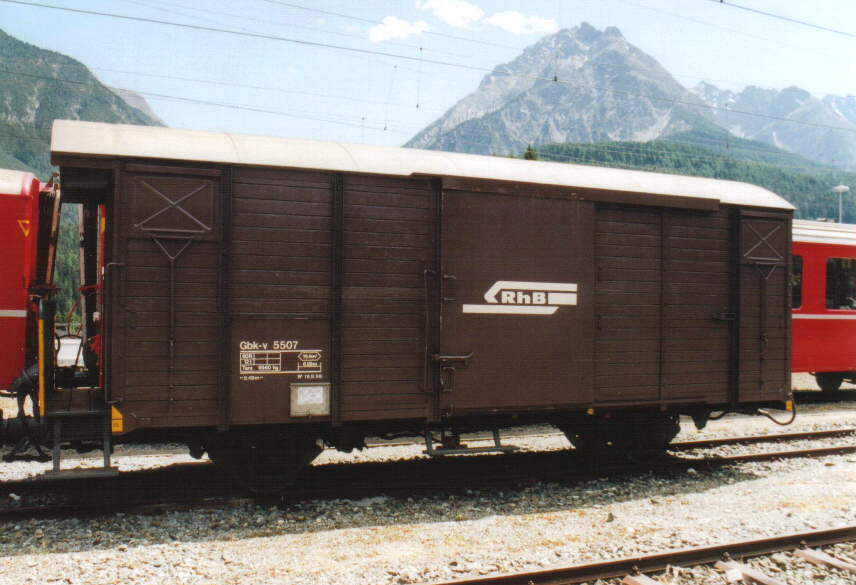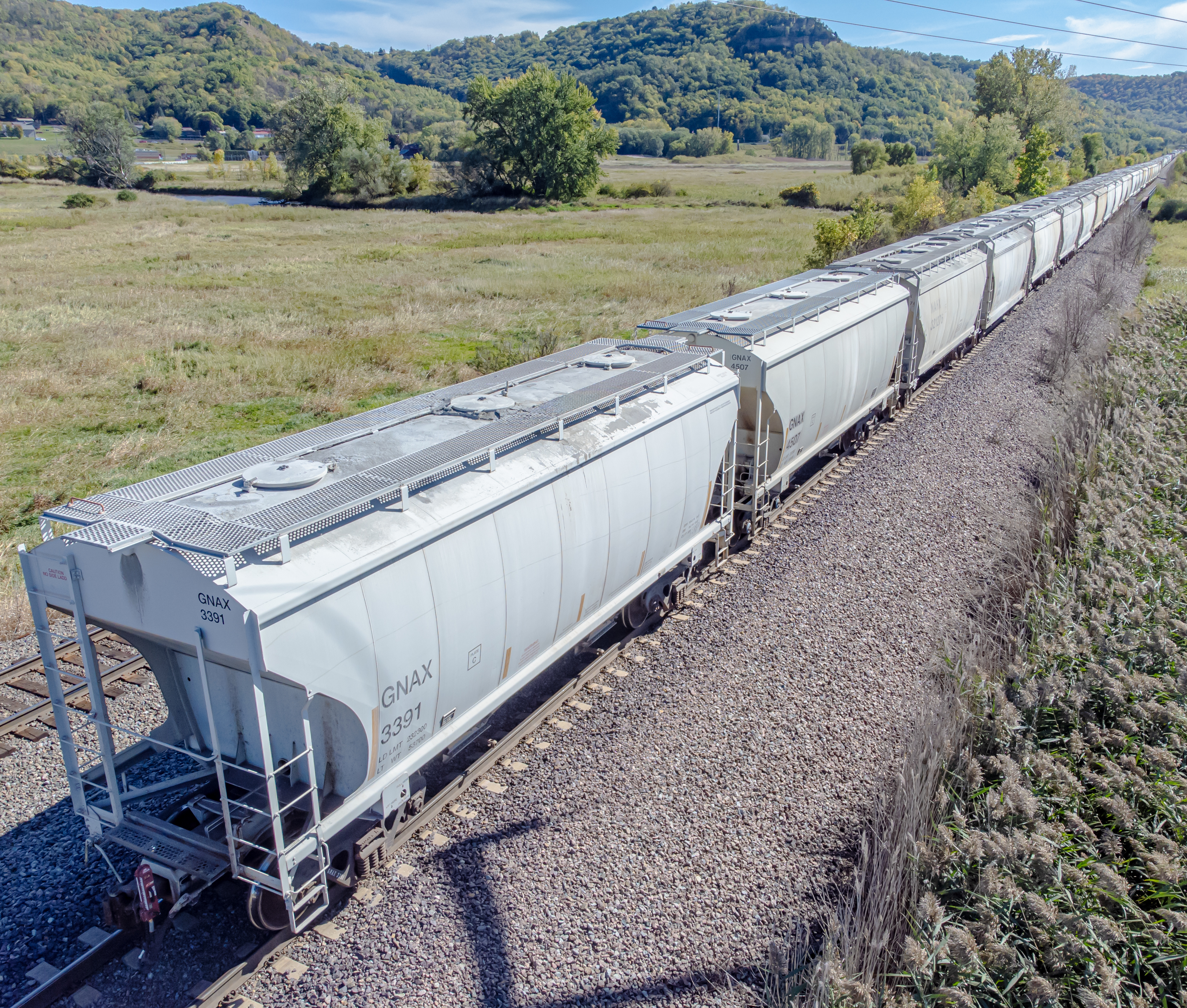|
Rolling Stock
The term rolling stock in the rail transport industry refers to railway vehicles, including both powered and unpowered vehicles: for example, locomotives, Railroad car#Freight cars, freight and Passenger railroad car, passenger cars (or coaches), and Railroad car#Non-revenue cars, non-revenue cars. Passenger vehicles can be un-powered, or self-propelled, Railcar, single or Multiple unit, multiple units. In North America, Australia and other countries, the term consist ( ) is used to refer to the rolling stock comprising a train, a list containing specific information for each car of a train, or a group of locomotives. In the United States, the term ''rolling stock'' has been expanded from the older broadly defined "trains" to include wheeled vehicles used by businesses on roadways. The word ''stock'' in the term is used in a sense of inventory. Rolling stock is considered to be a liquid asset, or close to it, since the value of the vehicle can be readily estimated and then ship ... [...More Info...] [...Related Items...] OR: [Wikipedia] [Google] [Baidu] |
Rail Yard
A rail yard, railway yard, railroad yard (US) or simply yard, is a series of Track (rail transport), tracks in a rail network for storing, sorting, or loading and unloading rail vehicles and locomotives. Yards have many tracks in parallel for keeping rolling stock or unused locomotives stored off the main line (rail), main line, so that they do not obstruct the flow of traffic. Cars or wagons are moved around by specially designed yard switcher locomotives (US) or shunter locomotives (UK), a type of locomotive. Cars or wagons in a yard may be sorted by numerous categories, including railway company, loaded or unloaded, destination, car type, or whether they need repairs. Yards are normally built where there is a need to store rail vehicles while they are not being loaded or unloaded, or are waiting to be assembled into trains. Large yards may have a Centralized traffic control, tower to control operations. Many yards are located at strategic points on a Main line (railway), main ... [...More Info...] [...Related Items...] OR: [Wikipedia] [Google] [Baidu] |
List Of Railway Vehicles
This is a list of all types of vehicle that can be used on a railway, either specifically for running on the rails, or for maintenance or up-keep of a railway. General classes of railway vehicle * Freight car (US) * Goods wagon ( UIC) * High speed train * Locomotive * Multiple unit ** Diesel Multiple Unit ** Electric Multiple Unit * Passenger car or coach * Private railroad car * Railcar or Railbus * Rail motor coach * Road-rail vehicle * Rolling stock * Tilting train * Travelling Post Office Railway vehicles listed by usage Traction vehicles or propelled cars * Autorail * Cab car or Control car (rail) * Driving Van Trailer * Driving Brake Standard Open * Shunter or Switcher * Tank locomotive Passenger use * Baggage car * Bilevel car * Coach (rail) * Comet (railcar) * Compartment coach * Corridor coach * Couchette car * Dining car * Dome car * Observation car * Open coach * Parlor car * Shoreliner * Sleeping car * Slip coach * Superliner (railcar) Freight ... [...More Info...] [...Related Items...] OR: [Wikipedia] [Google] [Baidu] |
List Of Rolling Stock Manufacturers
Throughout railroad history, many manufacturing companies have come and gone. This is a list of companies that manufactured railroad cars and other rolling stock. Most of these companies built both passenger and freight equipment and no distinction is made between the two for the purposes of this list. Argentina * Astarsa * COMETARSA * Emepa Group * Emprendimientos Ferroviarios * Fabricaciones Militares * Fábrica Argentina de Locomotoras * Fábrica Argentina de Vagones y Silos * Materfer * SABB S.A. * TecnoTren * PINAT EDO srl Australia * Alstom, Australia * Downer Rail * UGL Rail * Bradken Azerbaijan * Baku Carriage Repair Factory * Baku Metro (Assembly, Modernization and Repair) * STP-Wagon-Building Factory Belgium * BN Bombardier Brugge Brazil * Alstom * Andrade Gutierrez * Bom Sinal CAF* Marcopolo Rail * MAFERSA (acquired by Alstom in 1997) * COBRASMA Bulgaria * VRZ Karlovo * Express Service Ltd Canada * ALSTOM * ARS Canada Rolling Stock * Arva Indus ... [...More Info...] [...Related Items...] OR: [Wikipedia] [Google] [Baidu] |
Goods Wagon
Goods wagons or freight wagons (North America: freight cars), also known as goods carriages, goods trucks, freight carriages or freight trucks, are unpowered railway vehicles that are used for the transportation of cargo. A variety of wagon types are in use to handle different types of goods, but all goods wagons in a regional network typically have standardized couplers and other fittings, such as hoses for air brakes, allowing different wagon types to be assembled into trains. For tracking and identification purposes, goods wagons are generally assigned a unique identifier, typically a UIC wagon number, or in North America, a company reporting mark plus a company specific serial number. Development At the beginning of the railway era, the vast majority of goods wagons were four- wheeled (two wheelset) vehicles of simple construction. These were almost exclusively small covered wagons, open wagons with side-boards, and flat wagons with or without stakes. Over the cou ... [...More Info...] [...Related Items...] OR: [Wikipedia] [Google] [Baidu] |
Covered Goods Wagon
A covered goods wagon or covered goods van (United Kingdom) is a railway goods wagon which is designed for the transportation of moisture-susceptible goods and therefore fully enclosed by sides and a fixed roof. They are often referred to simply as covered wagons, and this is the term used by the International Union of Railways (UIC). Since the introduction of the UIC classification of goods wagons, international classification for goods wagons by the UIC in the 1960s a distinction has been drawn between ordinary and special covered wagons. Other types of wagon, such as refrigerated vans and goods wagons with opening roofs, are closely related to covered wagons from a design point of view. Similar freight cars in North America are called boxcars. Covered goods wagons for transporting part-load or parcel goods are almost as old as the railway itself. Because part-load goods were the most common freight in the early days of the railway, the covered van was then the most important ... [...More Info...] [...Related Items...] OR: [Wikipedia] [Google] [Baidu] |
Intermodal Container
An intermodal container, often called a shipping container, or a freight container, (or simply "container") is a large metal crate designed and built for intermodal freight transport, meaning these containers can be used across different Mode of transport, modes of transport – such as from container ship, ships to Rail transport, trains to Semi-trailer truck, trucks – without unloading and reloading their cargo. Intermodal containers are primarily used to store and transport materials and products efficiently and securely in the global containerization, containerized intermodal freight transport system, but smaller numbers are in regional use as well. It is like a boxcar that does not have wheels. Based on size alone, up to 95% of intermodal containers comply with ISO standards, and can officially be called ISO containers. These containers are known by many names: cargo container, sea container, ocean container, container van or sea van, sea can or C can, or MILVAN, or SEAVA ... [...More Info...] [...Related Items...] OR: [Wikipedia] [Google] [Baidu] |
Hopper Car
A hopper car () or hopper wagon () is a type of railroad freight car that has opening doors or gates on the underside or on the sides to discharge its cargo. They are used to transport loose solid bulk commodities such as coal, ore, grain, and track ballast. Plastic pellets and some finely ground material, similar to flour, are transported in hopper cars that have pneumatic unloading. The bottom gates on the pneumatic hoppers connect to a hose attached to industrial facilities' storage tanks. Air is injected to fluidize the railcar contents for unloading. The hopper car was developed in parallel with the development of automated handling of such commodities, including automated loading and unloading facilities. Hopper cars are distinguished from gondola cars, which do not have opening doors on their underside or sides. Gondola cars are simpler and more compact because sloping ends are not required, but a rotary car dumper is required to unload them. Some "dual-purpose" ... [...More Info...] [...Related Items...] OR: [Wikipedia] [Google] [Baidu] |
Electric Multiple Unit
An electric multiple unit or EMU is a multiple-unit train consisting of self-propelled carriages using electricity as the motive power. An EMU requires no separate locomotive, as electric traction motors are incorporated within one or a number of the carriages. An EMU is usually formed of two or more semi-permanently coupled carriages. However, electrically powered single-unit railcars are also generally classed as EMUs. The vast majority of EMUs are passenger trains but versions also exist for carrying mail. EMUs are popular on intercity, commuter, and suburban rail networks around the world due to their fast acceleration and pollution-free operation, and are used on most rapid-transit systems. Being quieter than diesel multiple units (DMUs) and locomotive-hauled trains, EMUs can operate later at night and more frequently without disturbing nearby residents. In addition, tunnel design for EMU trains is simpler as no provision is needed for exhausting fumes, although retrofitting ... [...More Info...] [...Related Items...] OR: [Wikipedia] [Google] [Baidu] |
Electric Locomotive
An electric locomotive is a locomotive powered by electricity from overhead lines, a third rail or on-board energy storage such as a Battery (electricity), battery or a supercapacitor. Locomotives with on-board fuelled prime mover (locomotive), prime movers, such as diesel engines or gas turbines, are classed as Diesel–electric powertrain, diesel–electric or turbine–electric powertrain, gas turbine–electric and not as electric locomotives, because the electric generator/motor combination serves only as a Transmission (mechanics), power transmission system. Electric locomotives benefit from the high efficiency of electric motors, often above 90% (not including the inefficiency of generating the electricity). Additional efficiency can be gained from regenerative braking, which allows kinetic energy to be recovered during braking to put power back on the line. Newer electric locomotives use AC motor-inverter drive systems that provide for regenerative braking. Electric loco ... [...More Info...] [...Related Items...] OR: [Wikipedia] [Google] [Baidu] |






